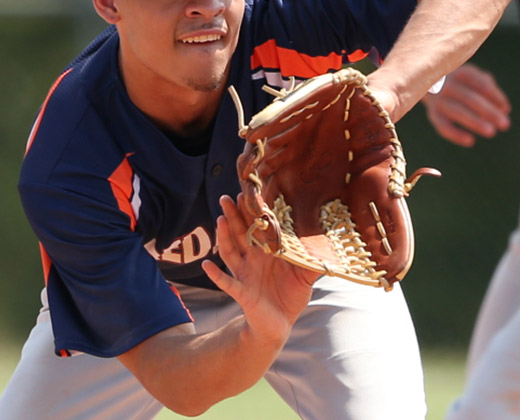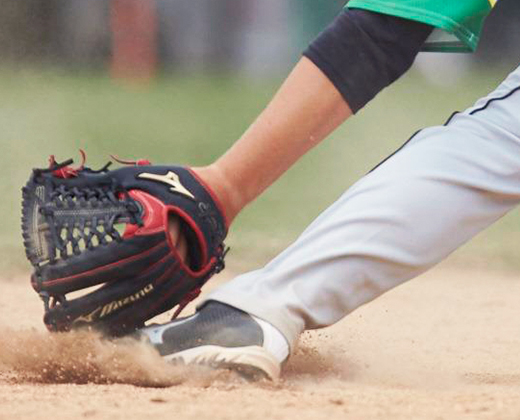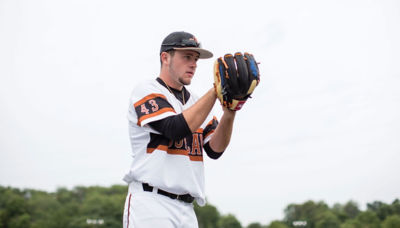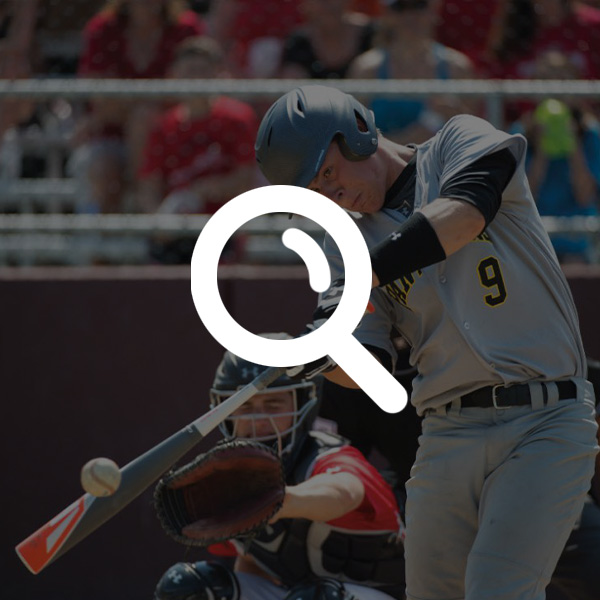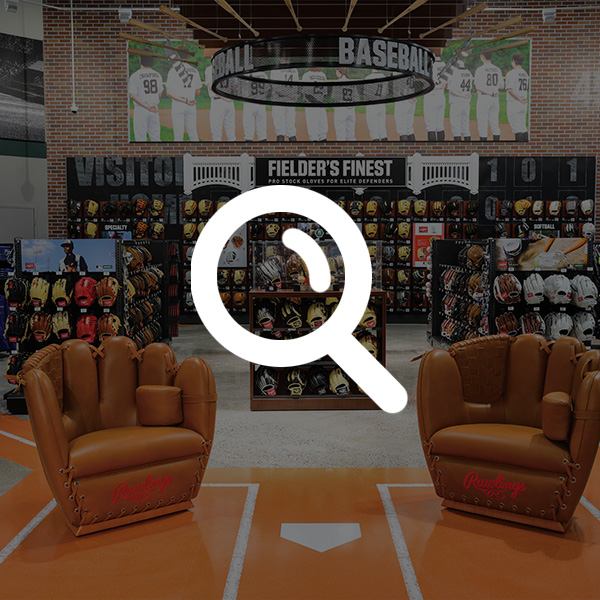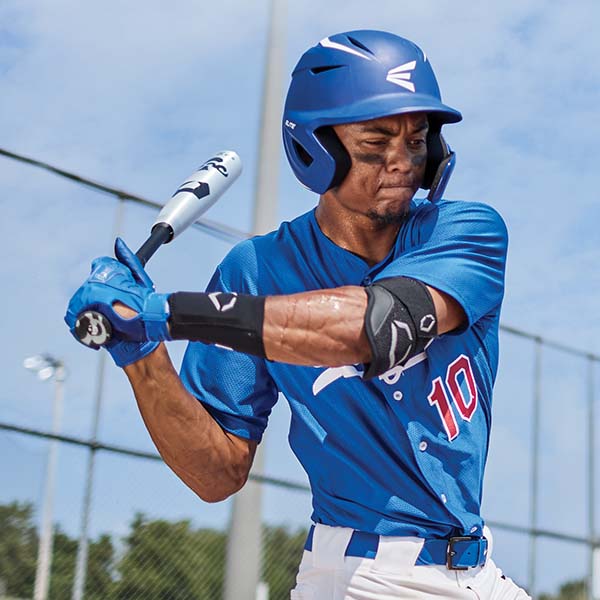Choosing The Right Baseball Glove
Find out what goes into your gear with these tips on choosing the best baseball glove for your game.
Baseball gloves are an iconic piece of sports equipment used by athletes young and old. From professional all-stars to youngsters in their first summer league, baseball gloves are a key piece of the game.
There are a lot of options when trying to decide on the right baseball glove. Differing materials, web types and intended playing positions can influence your pick. Knowing these factors from the start can help you better understand how to choose the right glove for your game this season.
PARTS OF A BASEBALL GLOVE
Before you slide into matching your mitt to your playing needs, it can be helpful to know your glove’s anatomy. A baseball glove has multiple components in its design, each with a purpose to help you catch the ball easier.

- Web: Connects the fingers and thumb for control of the ball on impact. Features a tightly woven piece of leather that allows fielders to close their hand on the ball to maintain possession. Most fly balls, pop-ups and line drives are caught in the web.
- Palm: Padding beneath the leather offers impact protection.
- Heel: This is the lower portion of the glove on the palm side. Provides protection and determines the break of your glove.
- Lacing: Provides shape to the glove. Leather is the preferred lacing material, allowing laces to break in as the glove does.
- Hinge: Allows the glove to open and close easily.
- Wrist Adjustment: An optional feature that allows for an adjustment. Common in youth baseball, fastpitch and slow pitch softball. Includes D-ring fasteners, hook-and-loop fasteners and buckle systems.
MATERIALS
Baseball gloves come in a variety of materials, each offering their own feel on the diamond.
- Synthetic leather can be easy to close with no "break-in" period required. It’s a lightweight option that can be good for younger players.
- As players get older and move up in leagues, softened, oil-treated leather offers an easy break-in and game-ready feel.
- Premium or Pro Series leather is the highest quality option, offering unparalleled craftsmanship, durability and comfort. Once broken in, this material can conform better to your hand.
Learn more about glove materials and what they can mean for your glove with our Baseball Gloves 101 guide.
BASEBALL GLOVE WEB TYPES
After materials, you can also choose between different web patterns for your glove. While enhancing style and design, each web type can also add further benefits to your mitt. Below are a few common glove web types and how they can influence your game.
FIELDERS
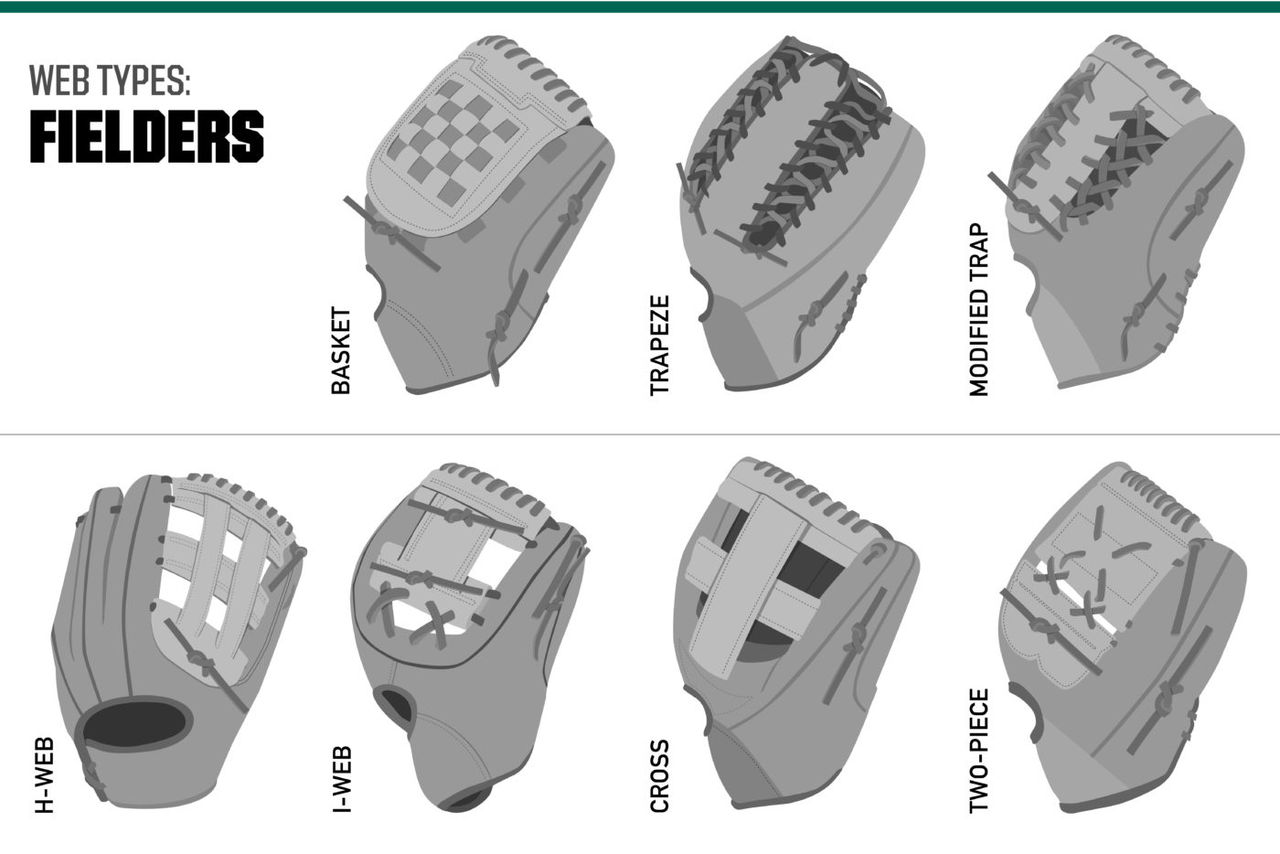
- Basket: This pattern is a favorite among pitchers looking to hide the ball. Basket webs can also be easier to close due to the flexibility in the basket weave.
- Trapeze: This option is often seen on outfielder gloves. Featuring a leather strap with interlaced lacing on each side, the trapeze web type can create a deeper pocket for catching fly balls.
- Modified Trap: Pitchers, infielders and outfielders universally use the modified trap web pattern. Similar to the trapeze web type, this pattern adds a leather strip to the top of the web for more stability.
- H-Web: H-Webs get their name from the “H” the leather posts create when sewn together. This web type is popular among outfielders and infielders, particularly third basemen. The open web allows dirt and debris to fall right through while remaining sturdy enough to field hard-hit balls.
- I-Web: Like the H-Web, the I-Web features leather posts in a capital “I” shape. This pattern can be found in the infield, as dirt and debris fall right through for easier transfers and exchanges.
- Single Post: Also known as a Cross Web, the single post pattern can provide ample flexibility and visibility. This web style features a lone vertical leather strip paired with two horizontal bars.
- Two-Piece: Like the basket web, two-piece web types can be great at concealing pitches. The two leather patches can also make for a heavier glove.
FIRST BASEMEN

- Single Post: Just like single post webs for fielder’s gloves, this web style can provide visibility and flexibility for athletes. The single post, or cross, pattern features two strips of leather across a vertical post.
- Modified H-Web: This web style modifies the classic H-Web pattern by featuring an added top leather strip. This can expand a first baseman’s catch radius and make for easier fielding.
- Dual Bar: Dual-bar webs features two horizontal leather bars stitched together. This forms the pocket, which can aid first basemen in trapping and securing the ball.
CATCHERS

- Half Moon: Similar to the two-piece web style found in fielder’s gloves, the half-moon pattern features two leather pieces laced together. This pattern creates a tight pocket and can offer more flexibility than other one-piece styles.
- One-Piece: This web pattern features one large piece of leather and is a popular style for catcher’s mitts. The lacing around the outer edge helps form a tight, shallow pocket.
FIT, FEEL AND STYLE
Although selecting the correct glove for your specific needs depends on two critical factors – your age and field position – it also depends on your personal preferences. The following are simple guidelines to follow:
- Fit: Choose a glove that fits snugly. Do not purchase a glove too big for your hand, as it could hinder your performance.
- Feel: Your glove should be stiff enough to give strength yet offer the flexibility to provide control and quick response.
- Style: Choose a look and color that fits you.
FINDING A GLOVE FOR YOUR POSITION
To achieve your ultimate potential, choose a baseball glove that's appropriate for your position on the field. Here are a few things to look for:
- Catchers should use a fingerless mitt with heavy padding to reduce the sting from the pitcher's throw. A claw-like shape can help properly catch the pitch. This special design also helps to provide a target for the pitcher. For more tips on how to choose a catcher’s mitt, read these Pro Tips.
- A pitcher’s glove often has closed webbing to better conceal the ball. Pitcher’s gloves typically feature less padding, too, because pitchers don’t need to worry about fielding as a primary skill. For more details on how to buy a baseball pitcher’s glove, read here.
- First basemen use a long, wide mitt to scoop up grounders from the dirt. A longer construction helps first basemen field throws from infielders, too. A deeper pocket allows them to securely receive the ball. Find out more on how to choose a first baseman’s mitt with these Pro Tips.
- Infielders use a five-fingered glove with a shallow pocket for a quick transfer and release. Find more details on how to buy a baseball infielder’s glove with these tips.
- Outfielders need a deeper pocket to catch fly balls. Additionally, a longer glove can help extend a player’s reach and range. Find more tips on how to buy an outfielder’s glove at Pro Tips.
The best baseball glove for you is the one that you feel comfortable with. Use these Pro Tips to choose the perfect mitt to add to your baseball gear this season.
Found the perfect glove but still need to break it in? Use these additional Pro Tips and find out how to break in your ball glove.


